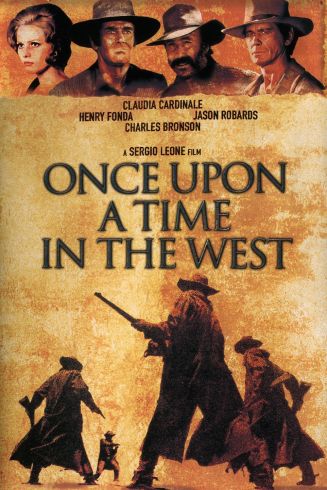 Once Upon a Time In the West specializes in a big trait of Sergio Leone’s work…patience. The film opens with a scene of three men waiting for a train to arrive. Everything is quiet, with hardly a word spoken. Only the sounds of a rickety windmill and water dripping onto a hat fill the soundscape. The three men’s motives uncertain. And we wait.
Once Upon a Time In the West specializes in a big trait of Sergio Leone’s work…patience. The film opens with a scene of three men waiting for a train to arrive. Everything is quiet, with hardly a word spoken. Only the sounds of a rickety windmill and water dripping onto a hat fill the soundscape. The three men’s motives uncertain. And we wait.
And wait.
And wait.
And wait.
And it is amazing. This could, and frankly, should be a terribly dull sequence…but the tension keeps building until the train arrives. And all we see is a man toss a bag off and the train moves on…but it is the reveal of what waits behind the train. We see a lone man standing before the other three. In a great bit of snappy dialog, the stranger notes they only brought three horses. One of the thugs laughs and says they are a horse short. After a pause, the man replies “You brought two horses two many.”
Once Upon a Time in the West follows the story of a young woman named Jill. She has arrived to be with her new husband and his children, only to discover on arrival the an and his children have been murdered. A railroad baron and his associate want her land, but two men have stepped in to challenge the crooked men. Cheyenne and “Harmonica” have different reasons for coming to town, but they unite to help Jill (while fulfilling their own plans).
Leone knows how to do an introduction. With Robard’s Cheyenne, he goes for a humorous introduction. We see Jill in a Catina talking with the owner, when they are interrupted by the sound of a gunfight. We never see it, only hear it, and it’s comic effect hits home as Cheyenne walks through the door full of swagger. In the same scene, we see a shot of Harmonica (Charles Bronson) sitting in the corner. There is a swinging lamp and the light and shadow dance across Bronson’s face poetically.
Henry Fonda’s villainous Frank (a gang leader who has adapted to the business world of the railroad barons) is charming and frightening. Claudia Cardinale is lovely in every scene, but it is not simply her beauty that the character brings to the table. She is a strong and dominant force in the film.
So many things that seem like they would have been fine as simple character affectations actually have deeper meaning and connections. We never learn Harmonica’s name, instead, when Frank grills him for who he is, he replies with the names of men Frank has killed. And his harmonica playing has a dark twist added.
Ennio Morricone produces another wonderful soundtrack. Harmonic’s playing is woven into it and it is some of the simplest and most haunted sounds you will ever hear.
The film is long, and I get why some find it to slow moving…but to me, this is part of what makes it such a rewarding viewing experience. Leone gives you the opportunity to soak in the environment. It is a film worthy of the term “Classic Western”.

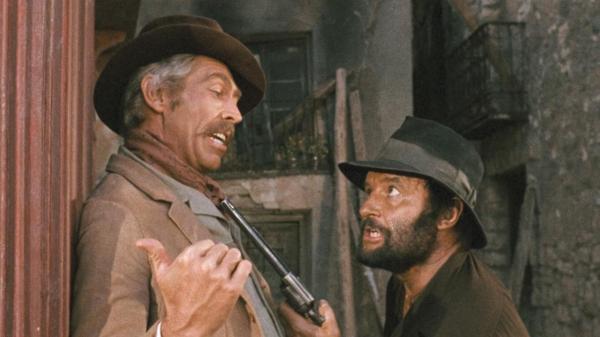
 Originally called a Fistful of Dynamite, Duck, You Sucker is Sergio Leone’s fourth Spaghetti Western, the first without Clint Eastwood. While a certainly more “poetic” title, Fistful of Dynamite suggests a tie to the Man With No Name films when one does not exist.
Originally called a Fistful of Dynamite, Duck, You Sucker is Sergio Leone’s fourth Spaghetti Western, the first without Clint Eastwood. While a certainly more “poetic” title, Fistful of Dynamite suggests a tie to the Man With No Name films when one does not exist.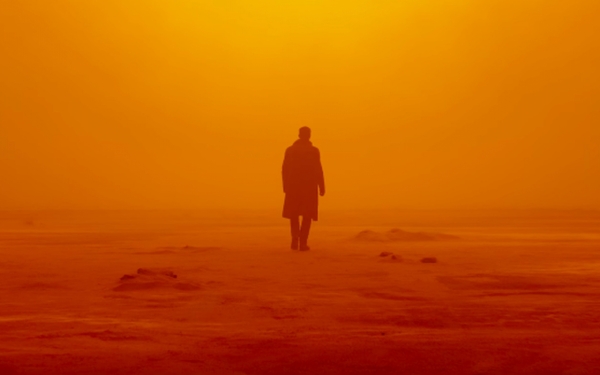
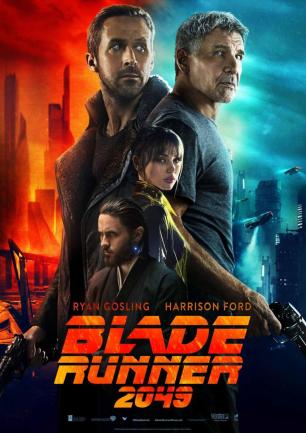 It is 35 years since the first Blade Runner. Agent K is a blade Runner and also a modern replicant. He is given a mission after the bones of a replicant are found that indicate she died in childbirth. Replicants should be unable to conceive, let alone carry a child to term.
It is 35 years since the first Blade Runner. Agent K is a blade Runner and also a modern replicant. He is given a mission after the bones of a replicant are found that indicate she died in childbirth. Replicants should be unable to conceive, let alone carry a child to term.
 The third film in the Man With No Name trilogy finds Clint Eastwood and Lee Van Cleef returning. Interestingly, Van Cleef is playing a different character in this film. This time around he is the untrustworthy villain Angel Eyes.
The third film in the Man With No Name trilogy finds Clint Eastwood and Lee Van Cleef returning. Interestingly, Van Cleef is playing a different character in this film. This time around he is the untrustworthy villain Angel Eyes.
 Eastwood returns for another round as the Man With No Name. For a few Dollars More finds him living the life of a bounty hunter.
Eastwood returns for another round as the Man With No Name. For a few Dollars More finds him living the life of a bounty hunter.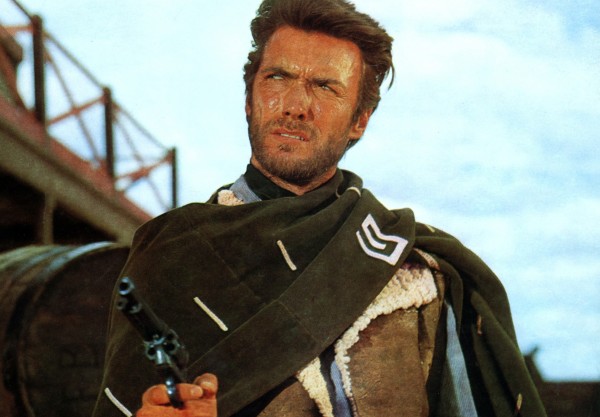
 A quiet drifter gets caught up in the local politics between two families of the town of San Miguel. Playing both sides, he seeks to make, well, a fistful of dollars.
A quiet drifter gets caught up in the local politics between two families of the town of San Miguel. Playing both sides, he seeks to make, well, a fistful of dollars.